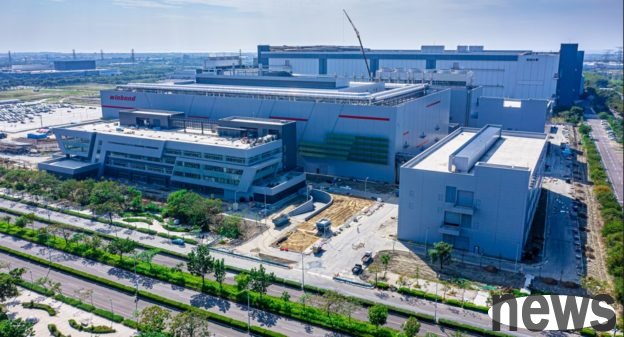Winbond showed excellent operating results in the third quarter, especially the gross profit margin of the memory department exceeded 50%. In this regard, general manager Chen Peiming admitted that a large part of the profits came from the reversal...

Winbond showed excellent operating results in the third quarter, especially the gross profit margin of the memory department exceeded 50%. In this regard, general manager Chen Peiming admitted that a large part of the profits came from the reversal of inventory value revaluation. Chen Peiming pointed out that the benefits brought by inventory re-evaluation are not much left in the fourth quarter, but it is expected that even without this benefit injection, the company is still confident that through the substantial growth in revenue, the profit situation in the fourth quarter will be maintained, so that it will be close to or maintain the level of the third quarter.
At the third quarter legal meeting, when asked about the current DRAM market situation by legal persons, Chen Peiming said that past price increase cycles usually ended within six to nine months, but this increase cycle shows structural changes. This is mainly because DDR4 cannot be manufactured using the most advanced processes. In addition, current customer demand is very strong and long-term, and some customers even require product supply until at least after 2028.
In addition, as the continued demand for DDR4 has attracted attention, Chen Peiming also believes that in data center applications, there is a huge demand for mainstream DRAM capacity, including AI servers and switches (Switch), and DDR4 is still the dominant one. Moreover, due to the system stability and compatibility requirements of data center infrastructure products, DDR4 requirements will not change during the visible product life cycle (even more than five years). Although switch controllers may move to DDR5 in the next two or three years, demand for DDR4 remains solid in the short term.
In order to meet strong market demand, Winbond is accelerating the expansion of its 16nm process. Among the current 15K production capacity of the Kaohsiung factory, 16nm only accounts for a minority, and the goal is to grow rapidly in 2026. Machine installation is expected to begin in the second quarter of 2026 at the earliest, and new production capacity is expected to be produced in the third and fourth quarters. Winbond plans to expand the production capacity of the Kaohsiung plant as much as possible, with the goal of increasing the total production capacity from the current 15K to about 24K or 25K, of which about 2/3 will be used for the 16nm process. This expansion plan is expected to double Winbond's bit count growth, while the chip count growth is approximately 60%.
As for the fields of NOR Flash and SLC NAND, Winbond hopes to become the most important supplier of Code Storage. And since these are relatively mature processes, new competitors are unlikely to invest on a large scale. The market for this type of product is expected to maintain stable and slow bit growth momentum, with an annual bit growth of approximately 20%. Finally, in terms of customer relations, when current customers require signing of long-term supply contracts (LTA), Winbond prefers to lock in quantity rather than fixed price. The price will usually be reviewed on a quarterly or half-yearly basis based on the customs of both parties. Chen Peiming emphasized that since we supply special memory (Specialty) rather than general commodities (Commodity), we have established a good transaction understanding with mainstream customers, and the relationship between the two parties is based on mutual trust.
Winbond is currently working on the Cube part of the advanced technology field. Although the target of Cube accounting for 40% to 50% of CMS revenue in 2028 needs to be recalculated, the project is progressing well. Cube's application requirements include customized low-latency, high-bandwidth operations, such as simple AI operations or edge-side inference. Winbond is currently developing TSV (silicon through hole) and Hybrid Bonding (hybrid bonding) processes. In part because there are not many companies that can provide Hybrid Bonding technology, Winbond may not only sell DRAM in the future, but also assist customers in Hybrid Bonding their SoC wafers with Winbond's DRAM wafers. Currently, TSV and Hybrid Bonding machines are used for preliminary development. In the future, mass production machines will be gradually added based on customer demand and market estimates.
Finally, Chen Peiming further pointed out that Winbond’s total capital expenditure covering 2025 and 2026~2027 is expected to be approximately NT$40 billion. The source of funds will prioritize free cash flow (Operating Cash Flow) to support it. It is expected that future cash flow will gradually improve. If there is a gap between the arrival time of the equipment and the cash flow schedule, other financing tools will be considered. In terms of depreciation provision, it will be based on the schedule of equipment arrival and production and in accordance with the company's internal accounting system.